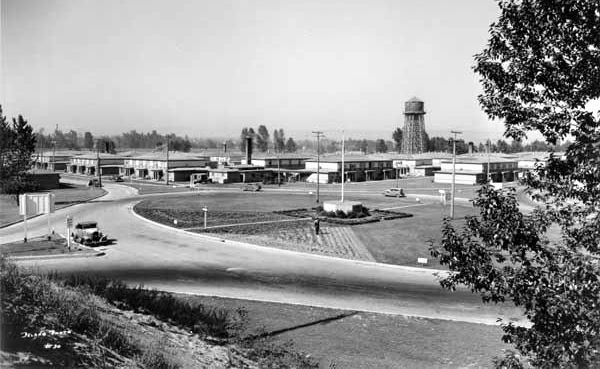Vanport, Oregon was the largest WWII federal housing project in the United States, and as such, attracted national attention to the region. At its peak, Vanport was home to over 42,000 residents, making it the second largest population center in the state. The housing project was “hidden” beyond Portland’s city limits. For many long-time Portland residents, Vanport was known as the “Negro Project” despite the fact that African Americans were no more than 25% of residents at any given time.
Portland had become, in early 1941, one of the major shipbuilding centers in the United States. The primary shipbuilder, Henry J. Kaiser, fearful that workers would leave the area due to a lack of housing, purchased 648 acres of land outside of Portland city limits to build a wartime housing complex. City officials were unhappy with Kaiser’s independent approach, but the contractor had become impatient with the inevitable slowness of municipal government.
Construction began in August 1942 and before Christmas the first families were moving into apartments. Despite the fact that Vanport was built with federal funds and constructed after Executive Order 8802, local officials enforced de facto segregation. In Vanport, only three sections, a total of 50 buildings were allotted to black residents. Moreover Vanport was one of only two housing projects in the Portland area that accepted any blacks.
At the end of the war, approximately 5,000 African Americans continued to live in Vanport with another 5,000 crowded into Northeast Portland. Black residents of Portland continue to believe that local officials kept Vanport open because they did not want more African Americans to move inside city limits. However, on May 31, 1948, the Vanport Flood washed away the temporary city and forced the city to accept its residents.
Despite its short life span, Vanport helped create several “firsts” for Oregon and the Portland area. The first black teachers and policemen in the state were hired in Vanport during the war years. The Vanport Interracial Council worked to establish a Portland office of the Urban League. Vanport College was the precursor to Portland State University where many veterans used the GI Bill to get a new start on life. In the end, Vanport became part of the story of civil rights and African Americans in the West.

